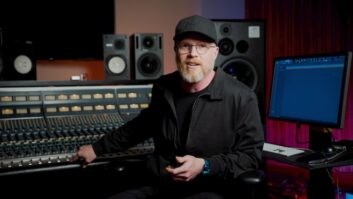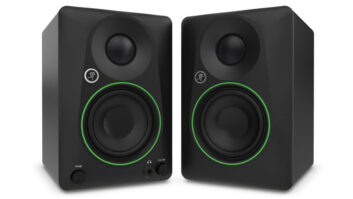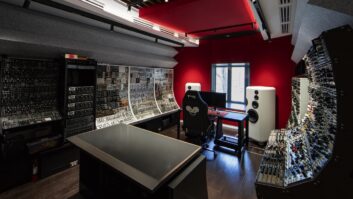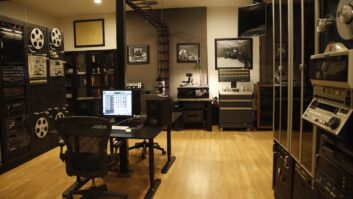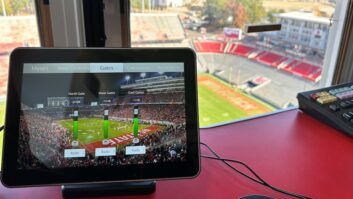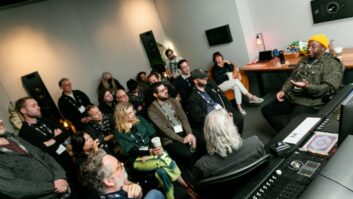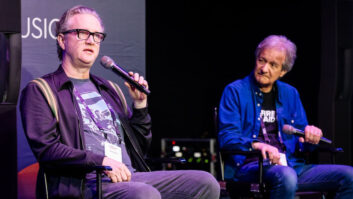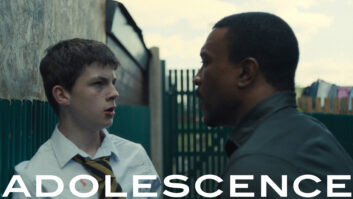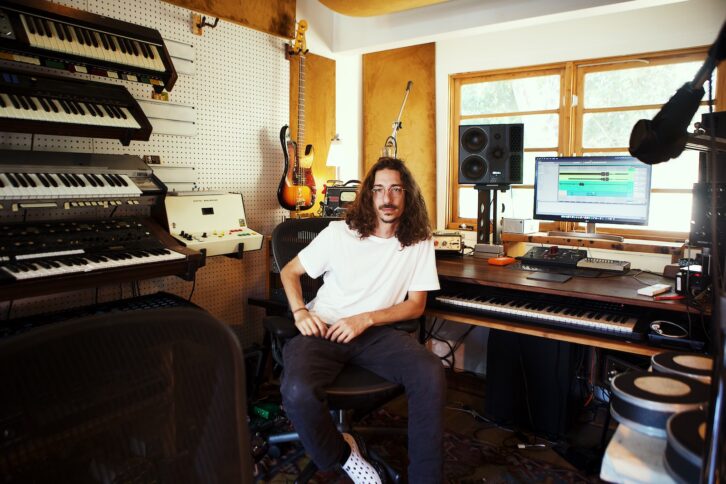
The pandemic was a pivotal time for musician, songwriter, producer and six-time Grammy nominee Carter Lang. In 2020, the Chicago native packed up his gear and relocated his home studio to Glendale, Calif., to focus on SZA’s latest album, SOS; by the end of the project, he had co-written and produced 14 of the 23 songs, including one, “Kill Bill,” that was about to make history.
Lang first hooked up with SZA in 2015, joining her band as a bass player before becoming one of her most reliable collaborators. His fingerprints are all over her debut album, Ctrl, including the track “Supermodel,” which earned him his first Grammy nomination, for Best R&B Song. His other Grammy nods have come from “Good Days,” the lead single from SOS, and his collaborations with Doja Cat (Planet Her, “Kiss Me More”), Lil Nas X (Montero), and Post Malone and Swae Lee (“Sunflower,” RIAA-certified a record 17-times Platinum).
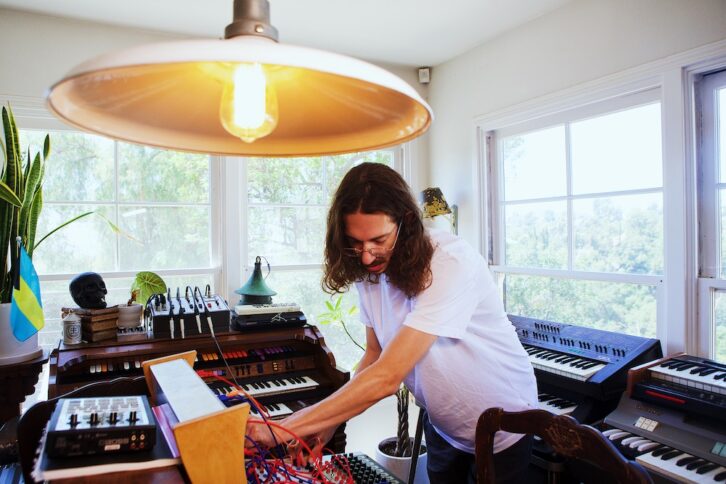
SOS, SZA’s second album, has taken the singer to a whole new level. To be sure, Ctrl has now chalked up 2 billion streams on Spotify, but SOS passed 3 billion in just three weeks. Meanwhile, in April 2023, “Kill Bill” broke the record for the most weeks at No. 1 on Billboard’s Hot R&B/Hip-Hop Songs chart by a lead female artist.
“Good Days” was the first song Lang worked on in his new home studio, he remembers, during the pandemic isolation period. “Soon after, my entire home was filled with vintage synthesizers, drum machines and many esoteric instruments filled with character that create sounds reminiscent of the records I had been enjoying, or sounds I had been searching to use,” he says.
He’s not kidding. As he talks on Zoom, he roams from room to room, offering glimpses of his vast collection. A sun-filled living room is packed wall-to-wall with equipment, including a Leslie cabinet and an analog mixer. There are synths—Moog, Sequential Circuits, Oberheim, a 1010music modular—everywhere, along with Neumann and Flea mics, Neve and Bryce Gonzales’ Highland Dynamics preamps, Chandler compressors and UA interfaces. His main monitors are a pair of PMC 6-2s.
SZA’s eclectic songs typically feature plenty of real instruments, even though they may not always be instantly recognizable. “For this album, I enjoyed working with audio more than MIDI, dialing a sound from the ground up to capture it directly from the instrument, through effects boxes and room mics simultaneously,” Lang explains.
“I’m using Ableton a lot; even if I’m using all the nicest equipment, at the end of the day, no sound is safe once it’s in my computer,” he chuckles. “Sometimes, it’s about having different preamps going into each other and breaking the rules of gain staging. I’m like a pet with a chew toy; I just chew it up.”
The sounds he creates are often a balance of lo-fi and hi-fi: “I love to tread the line, because you can record something off your phone, or some random clip into your Mac, then throw that into an aux cord through a bunch of different pieces of physical gear, and some crazy shit comes out.”
Lang learned to play piano at age seven, adding bass guitar to his repertoire as a teenager.
In high school and college—he studied Music Business at Loyola University New Orleans—he got into cratedigging and programming beats in an Akai MPC. It wasn’t until after college that he fell down the rabbit hole and discovered that the production process can have a physical dimension.
“I started experimenting with pedals and synthesizers,” he says. “I feel the safest when I’m able to toy around with my stuff in front of people and have them feel the same type of spark that I feel when I turn something randomly. You’re into it, your body’s moving with the beat and you’re turning the knobs to the beat and exploring.”
Things have since come full circle: “Everything that I’ve been learning with physical touch, I’ve been trying to translate into working in my DAW,” he says. “It makes every little plug-in feel valuable, even all the stock Ableton stuff, just using my ears and getting super-wild. You have all this stuff in the box, infinite real estate, and that’s a totally different vibe—so I love mixing the two [production methods] together.”
For Lang, writing and production can be a team sport or a solo endeavor: “I like to have people come over and jam, but sometimes I just tinker with a new piece of gear until I really learn it and try to capture as much stuff as I can, leaving my computer on Record in the other room.”
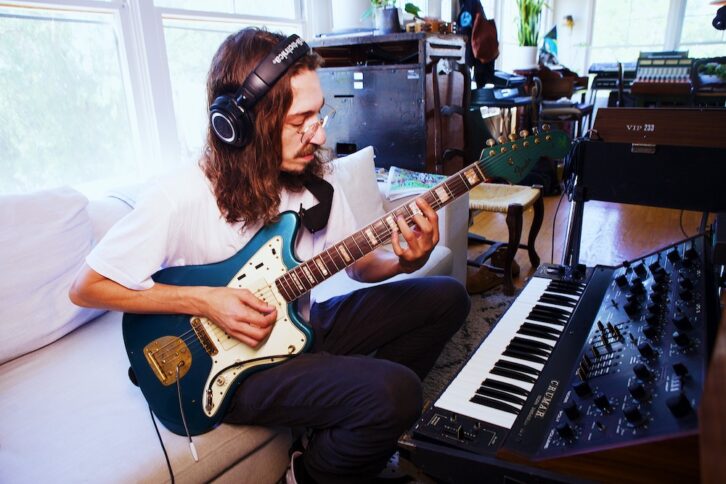
Some of the songs on SOS sprang out of jam sessions at Lang’s home studio, where he and the other musicians would record everything, then choose 10 spontaneous moments worth exploring further. “After developing the sounds more, we presented the ideas to SZA; ‘Seek & Destroy,’ ‘Blind’ and ‘Far’ were started that way,” he reports.
On other songs, such as “Good Days” and “Kill Bill,” Lang’s collaborators sent him loops and melodies that he then built into full tracks through exploration and editing. “I spent hours alone recording takes on different instrument combinations, cutting up all those parts and arranging them to create more dynamic instrumentation.”
Then there are those rare occasions where he gets to sit and collaborate with the artist. “When we did Omar Apollo’s album, having a chance to sit with the artist and do the song from the ground up, where you’re not really thinking about a time limit? That was a definite treat,” he says. That project, Apollo’s debut album, Ivory, won the singer and songwriter a Grammy nod for Best New Artist.
Post Malone Live: Multifaceted Monitors on a Twelve Carat Tour
Lang’s house is now bursting at the seams with gear, so he’s found himself a new place that has its own studio, built in the 1970s. “The whole inside of the house was redone recently, but the studio was just left drywall, with everything gutted. It’s basically a big live room and a moderately sized control room, with cork doors and stuff like that—old school! Then there’s little subterranean studio B. I’m going to put a bunch of synths in there and make it an electronic dungeon.”
The first order of business was to cut a big window into the live room to let the sunshine in.
“I can’t wait to start to put some staple gear into the new control room specifically, some of the old-school, state-of-the-art rack gear that I’ve been getting, like Pultecs and gates,” he says. He’s drawn up a wish list of additional vintage gear: “I’ve been talking with a few people and doing a lot of research.”
Lang has a clear vision for the new spot. “I want it to reflect something like when I first walked into Shangri-La almost 10 years ago with my friends,” says Lang, referring to producer Rick Rubin’s Malibu hideaway. “I’m not copying it, but there’s a type of nostalgia and also futurism to that studio—and they love their gear. It’s also very well organized. I want to make this spot feel just as open and inspiring, like the living room that I’m in now.”
